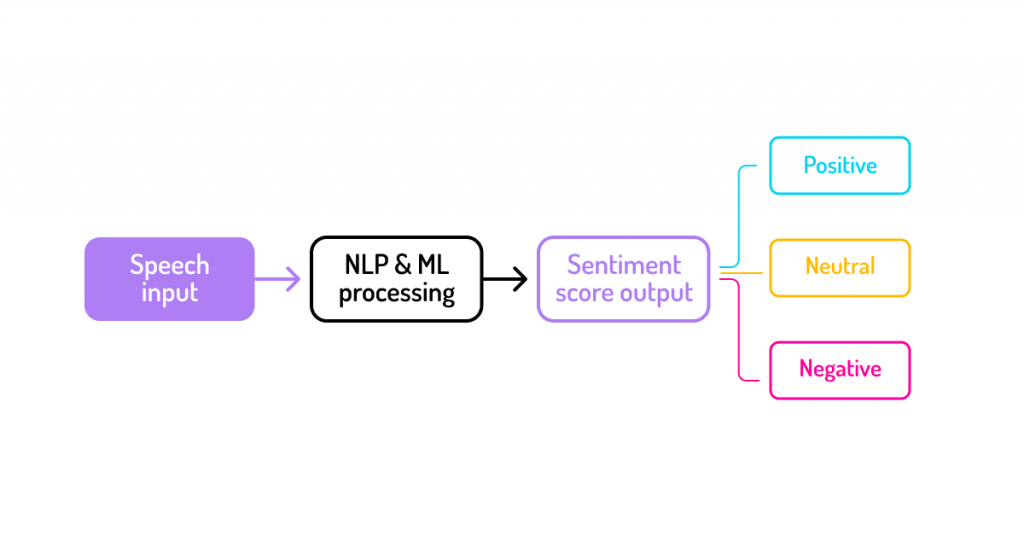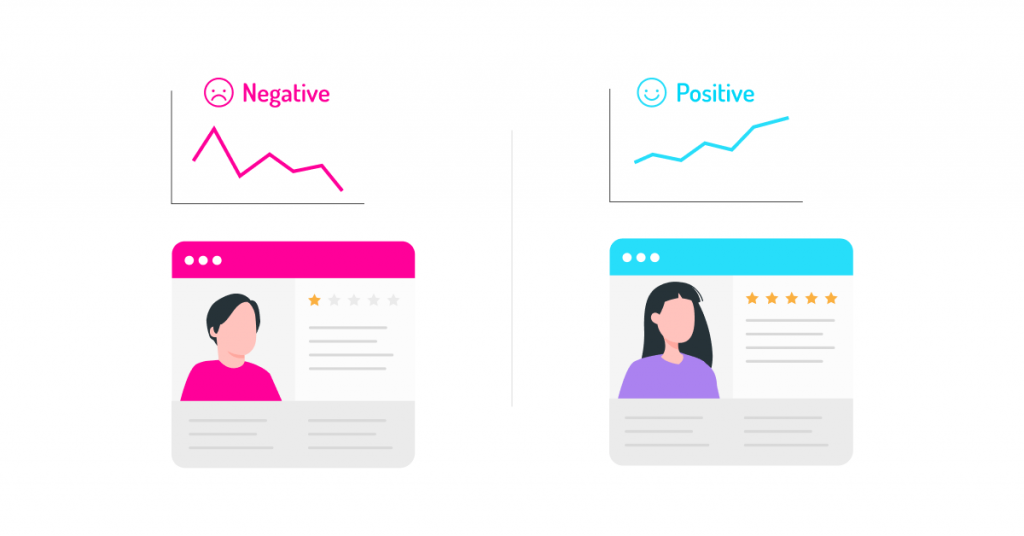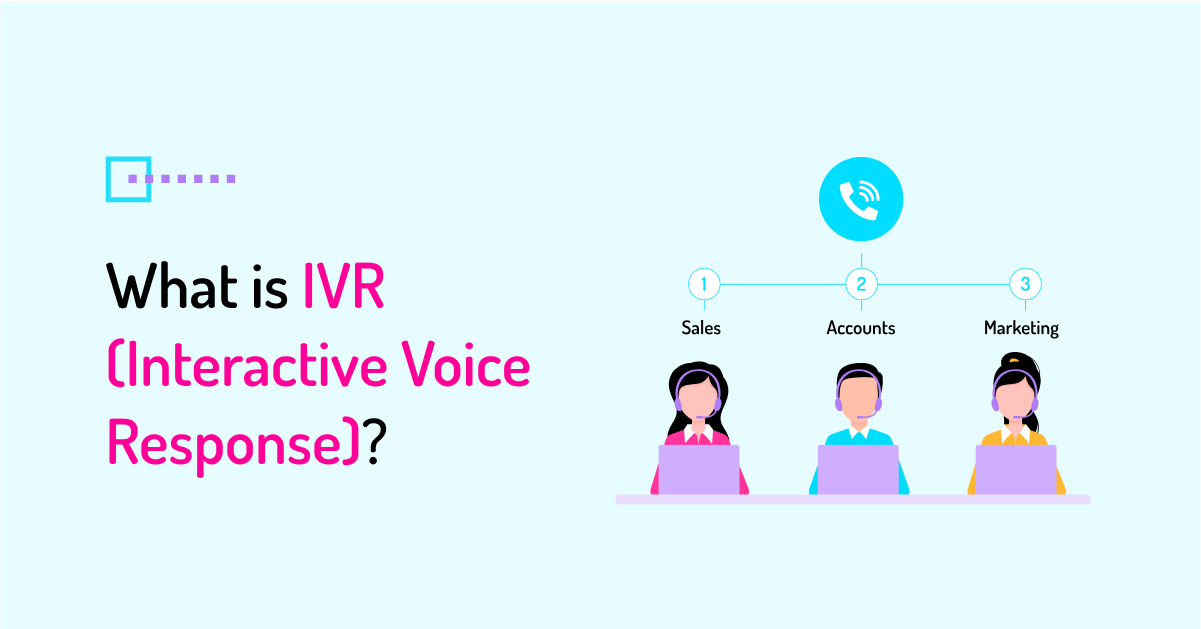Customer sentiment is rapidly becoming one of the most critical metrics to measure in call centers and contact centers. Understanding customer sentiment is crucial to providing customers with excellent experience in customer interactions and empowers managers with valuable insights they can use to fuel process improvements. That is why sentiment analysis software tools have become widely utilized in the call center environment.
What is Call Center Sentiment Analysis?
In a broader sense, sentiment analysis (also referred to as opinion mining) is an AI-powered technology used by companies to monitor and gain insights into customers’ emotions, attitudes, and opinions towards a company’s products, services, customer support, or a brand as a whole. It can be used to evaluate conversations and interactions between a business and its customers, including phone conversations, live chats, IM messages, social media comments, etc.
In the call center context, sentiment analysis refers to the process of analyzing real-time phone conversations between customers and call center agents with the goal of understanding callers’ emotions and feelings. Paired with other customer experience metrics, contact center sentiment analysis helps measure customer satisfaction and enables managers to gain better visibility into agent performance.
How Sentiment Analysis Works
Sentiment analysis technology utilizes Natural Language Processing (NLP), Machine Learning (ML), and computational linguistics to determine the sentiment of the speaker, which is then given a sentiment score as positive, negative, or neutral and made available through reporting tools.

Thus, a positive sentiment score would indicate that a customer expressed a positive or favorable sentiment during an interaction, which is typically associated with higher customer satisfaction. While a negative sentiment would indicate that a customer’s perception of an interaction was generally negative.
When evaluating speech, sentiment analysis takes into account various factors, including the words and vocabulary, intonation, pitch variations, the rate of speech (the speed of speaking), speech fluency, loudness, the amount of stress and frustration in a speaker’s voice, and other variables. That allows for a more objective interpretation of speech that would otherwise be difficult to measure based solely on subjective judgment.
Benefits of Sentiment Analysis in Call Centers
Gauging customer satisfaction
Though Customer Satisfaction Score (CSAT) and Net Promoter Score (NPS) are important metrics to measure satisfaction levels in call centers, they rely on voluntary participation, meaning that only a small percentage of customers who respond to surveys will share their opinions. Sentiment analysis, on the other hand, can provide managers with a more holistic view of customer satisfaction as it evaluates every interaction.
Enhancing customer experience
Tracking customer sentiment during customer service calls and gauging customer emotions in real time gives agents more context to better adjust the conversation (including the language and the tone) to deliver a more empathetic and personalized experience. That, in turn, helps reduce call escalations, enhance customer experience, improve your Customer Satisfaction (CSAT) Scores, and increase customer loyalty and retention.
Increasing sales

In outbound call centers where agents are predominantly involved in making outbound sales calls to prospects or customers, leveraging real-time sentiment analysis insights during conversations can assist agents in better identifying potential sales opportunities. Thus, positive sentiments might signal a customer’s increased interest in a company’s products or services and receptiveness to upselling, cross-selling, or introducing new offerings.
Assessing agent performance
While tracking performance metrics and KPIs such as First Call Resolution (FCR) Rates, the Average Handle Time, Escalation Rate, and others is critical to evaluating agent efficiency, consistent sentiment analysis monitoring can provide call center managers and supervisors with deeper insights into agent performance.
By taking a closer look at how agents are handling customer conversations and dealing with negative sentiment, managers can assess an agent’s ability to manage customer emotions and handle customer frustration and dissatisfaction. Managers can also use this data to identify agent training gaps and adjust their call coaching and training sessions accordingly.
Identifying improvement opportunities
By further investigating sentiment analysis data, managers can gain a better understanding of the reasons behind customer dissatisfaction, identify trends, customer preferences, and pain points, and uncover issues that might otherwise go unnoticed. Using these insights, managers can refine call scripts based on customers’ emotional responses, adjust call routing, and improve internal processes and procedures to better meet customer expectations.
Spotting issues beyond the service
Sentiment analysis can take some pressure off the call center by helping identify issues that go beyond customers’ dissatisfaction with the service level received. If, for instance, negative sentiment is mostly associated with a company’s specific product or service, which is something outside of the control of call center agents, managers can gain and forward actionable feedback to product development and marketing teams, making sentiment analysis a valuable marketing tool as well.
Enhancing customer profiles

Tracking customer sentiment and capturing sentiment analysis data over a long period of time enables call centers to get to know their customers on a deeper level and helps enhance customer profiles, both at an individual and customer segment level. Based on this data, call centers can adjust their call routing strategy and route customers who consistently display negative sentiment to specific agents, while those who display positive sentiment might become a great source for reviews, testimonials, and case studies.
Challenges and Limitations of Sentiment Analysis
Sentiment analysis is a valuable monitoring tool for call centers and contact centers. However, due to the complexity of human language, there are certain challenges and limitations that may cause sentiment analysis algorithms to produce inaccurate results. That is why sentiment analysis should always be used in conjunction with other analysis methods when evaluating customer interactions in call centers.
For example, people often use sarcasm and express their negative sentiments using positive words, making it difficult for Natural Language Processing algorithms to understand and interpret the sentiment correctly. Consider the following sentence: ‘I love it having to wait on hold for an hour.’ While it is obvious to a customer service representative that the customer has clearly expressed their dissatisfaction with long hold times, sentiment analysis tools may classify the sentiment as positive.
Implementing Sentiment Analysis in a Call Center
Sentiment analysis software often comes as part of more complex speech analytics tools and can be integrated into contact center software solutions. At VoiceSpin, for example, in addition to outbound call center software, you can get an AI Auto Dialer and an AI Speech Analyzer that features sentiment analysis alongside other analytics capabilities, such as keyword spotting and QA and compliance monitoring. In call centers, sentiment analysis is often used in tandem with other call center analytics tools, including real-time call monitoring and call recording.
Best Practices for Improving Sentiment Analysis Scores in a Call Center
Employing active listening
Leveraging active listening along with other soft skills during customer interactions is one of the most efficient ways to ensure an agent is able to properly understand a customer’s issue and the root cause of their dissatisfaction. That enables them to respond in the most appropriate way and provide the most optimal solution to their problem, thus contributing to more positive sentiment scores as well as improved customer experience.
Demonstrating empathy
Showing empathy and acknowledging a customer’s feelings throughout the conversation can go a long way in helping agents diffuse challenging conversations, reduce call escalations, and calm frustrated customers. When an agent is able to demonstrate empathy, that gives a customer the feeling of being heard and understood, which is often enough to turn a negative sentiment into a positive one.
Owning the customer’s issue
Agents should be empowered to own customer issues, even if they cannot solve them immediately on their own. Even if an agent is unable to resolve a customer’s query on the first call – either due to lack of knowledge, expertise, or authority – they should be able to take responsibility and reassure the customer that their issue will still be addressed, giving them confidence, peace of mind, and helping to avoid negative sentiment.
Allowing flexibility in responses
While adhering to scripts helps call center agents ensure consistency in service delivery and is often a way to mitigate compliance risks, excessive usage of scripted responses might make them sound robotic and impersonal, negatively impacting the overall experience and customer sentiment. That is why agents should be empowered to be flexible in their responses whenever appropriate, which also helps make interactions more personalized, improving sentiment scores.
Matching the tone to build rapport
Another efficient technique agents can take advantage of is adapting the tone to match the customer’s sentiment. By capturing a customer’s emotions and adjusting their tone and overall communication style accordingly when interacting with a customer, agents can easier build rapport with them, increase trust, and avoid negative sentiment.
Wrapping up on a positive note
Last impressions can immediately transform a customer’s perception of the interaction, which is why the way an agent wraps up the interaction plays a crucial role in customer sentiment. Thus, ending a call on a positive note, showing appreciation by thanking the customer for their loyalty, informing them about the next steps, or encouraging them to call back in the future are all efficient ways to leave a positive last impression and improve sentiment scores.





 +18889082995
+18889082995
 +442036084160
+442036084160
 +97237237006
+97237237006